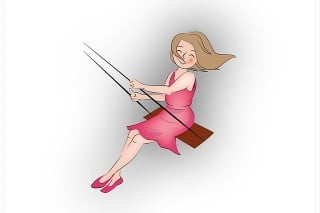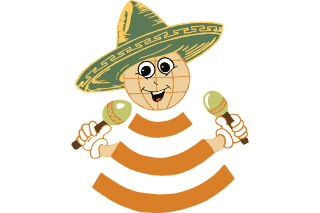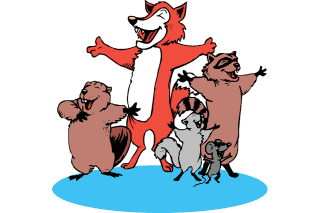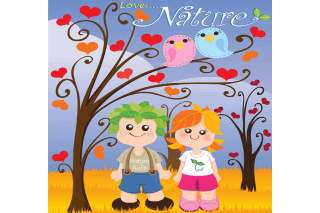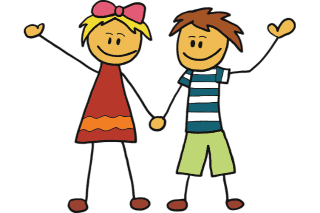
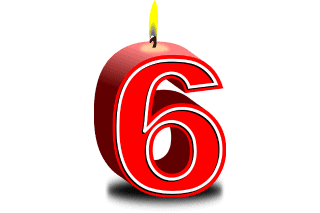
Now We Are Six
“Now We Are Six” is a collection of poems by A. A. Milne, published in 1927. The book is a follow-up to “When We Were Very Young,” another collection of poems by Milne that was published in 1924. “Now We Are Six” includes 35 poems, most of which are written from the perspective of a child.
It is a short poem from the perspective of a six year old kid where he expresses the vivid thoughts about how the life was improving very little till the years one to five, but now six is the best year. The kid also feels as if they are as clever and happy as they could ever be at year six.
“Now We Are Six” Poem Lyrics
When I was One,
I had just begun.
When I was Two,
I was nearly new.
When I was Three
I was hardly me.
When I was Four,
I was not much more.
When I was Five,
I was just alive.
But now I am Six,
I’m as clever as clever,
So I think I’ll be six now forever and ever.
The poems are generally light-hearted and whimsical, with themes that include childhood innocence, imagination, and the natural world. It is a beloved collection of poetry that has delighted generations of readers with its playful and imaginative spirit.
The poem is a charming reflection on growing up and the passing of time. The speaker describes their journey from being a young child who has just begun to explore the world to a six-year-old who is confident and “clever as clever.” The final stanza expresses the desire to stay six forever, suggesting that the speaker has reached a point of contentment with their age and place in the world. Overall, the poem is a celebration of childhood and the wonder and excitement that comes with growing up.
Frequently asked questions (FAQ's) based on 'Now We Are Six'
Answer : “Now We Are Six” is the poem by English author A.A. Milne.
Answer : He poet felt that he has become very clever when he turned six.
Answer : “Now We Are Six” poem was published in 1927.
Answer : Six is the best year of age according to poet.
Answer : Poet was happy at the age of six because he became clever now.
Some more details based on 'Now We Are Six'
The poem takes the form of a humorous narrative in which the speaker reflects on the various milestones and accomplishments of their early childhood. One of the most notable features of the poem is its use of repetition and wordplay. The phrase “when I was one, I had just begun” is repeated throughout the poem, creating a sense of rhythm and whimsy that is characteristic of Milne’s writing style.
The poem’s use of simple language and playful tone make it a popular choice for readings and recitations at children’s events such as birthday parties and school assemblies. Its themes of growth and development also make it a popular choice for parents and educators who want to teach young children about the joys and challenges of early childhood.
Interesting Fact: A.A. Milne was inspired to write “When I was One” by his own experiences as a father, as well as by his love of wordplay and nonsense verse. The poem is a prime example of Milne’s whimsical and imaginative writing style, which has enchanted generations of readers both young and old.
Interestingly, Milne was initially hesitant to publish “When We Were Very Young” because he was worried that it would not be taken seriously. However, the book’s popularity proved him wrong, and it helped to establish Milne as one of the most beloved and celebrated children’s authors of his time.
Some activities for children's based on 'Now We Are Six'
Activity 1: Timeline Creation
- Ask the children to draw a timeline of their lives, starting from when they were born and going up until their current age.
- Encourage them to include important events or milestones, such as when they learned to walk, started school, or celebrated a birthday.
- Once everyone has finished their timelines, have them share their work with the group and discuss the similarities and differences between their timelines.
Note: This activity promotes creativity, literacy skills, and chronological thinking. It allows children to reflect on the events and milestones in their lives and helps them understand how those experiences shape who they are today.
Activity 2: Memory Sharing
- Ask the children to share a favorite memory from when they were one year old, or a memory from a time when they were very young.
- Encourage them to share as much detail as possible about the memory, including what they saw, heard, smelled, or felt.
- As a group, discuss what the children learned about each other and how their experiences compare to those of the children in the “When I Was One” poems.
Note: This activity promotes social skills, communication, and empathy. It allows children to practice listening to and respecting each other’s stories, and helps them develop an appreciation for the diversity of experiences that people can have.
Related links
Other popular poems
Other related keywords and search's
- we are six now poem pdf download
- now we are six poem explanation
- now we are six poem questions and answers
- now we are six poem meaning
- we are six now poem framed
- now we are six poem printable
- now we are six poem by a.a. milne
- now we are six poem summary
- now we are six poem print
- we are six now full lyrics written
- we are six now words and notes
- now we are six poem analysis and meaning
- when i was one i had just begun poem
- when i was one and twenty summary
- when i was one-and-twenty line by line analysis





